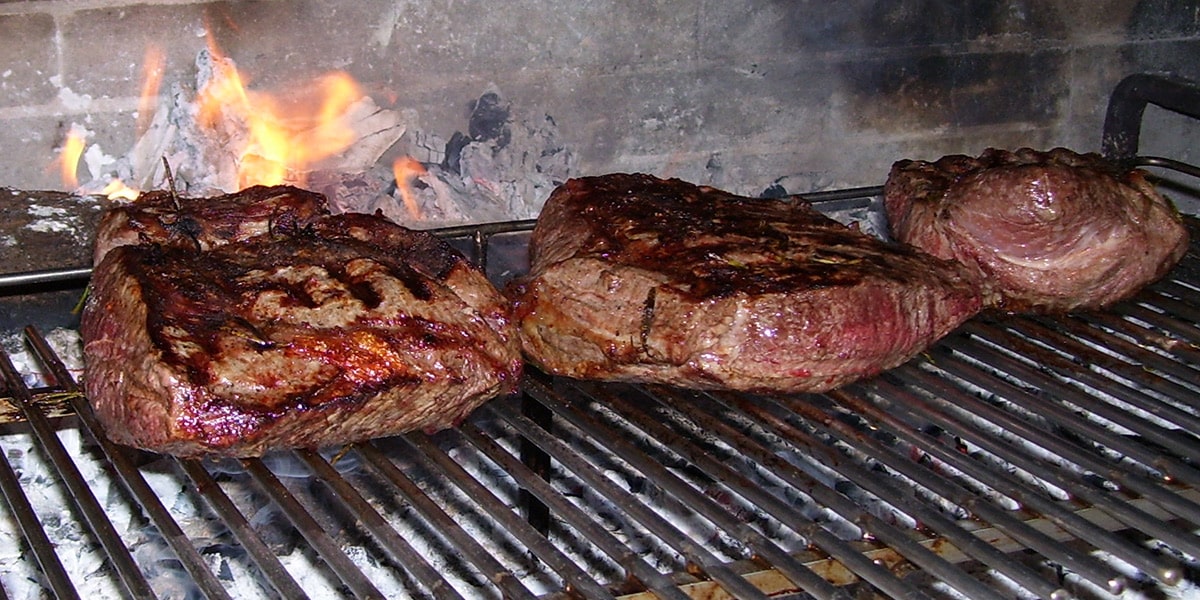Protein is everywhere — from protein-packed Pop-Tarts to cold brew lattes — but the hype doesn’t always match what athletes really need. While headlines emphasize protein as a performance and weight-loss magic bullet, actual research shows that optimal intake depends on your activity level, training type, and goals. For endurance and strength athletes alike, protein supports recovery, muscle maintenance, and performance — but only when paired with a structured training program. In this post, we break down current science, practical guidelines, and how to find your ideal protein intake without overcomplicating your diet.
Protein is having its moment. Industry data shows a 122% rise in protein-based food products between 2020 and 2024, and search trends reflect the same surge.

But while protein dominates headlines, the popular narrative doesn’t always match what endurance athletes truly need. In fact, depending on the time of year, we can see big swings in nutritional focus in the media, while nutritional recommendations ebb and flow at a much slower and stable rate. Looking at the figure below, notice the spikes in protein and weight loss search popularity from Google. This helps illustrate that protein focus is in fact on the rise, but is furthered every January first as people set out on their weight loss New’s Years Resolutions.

RDA vs. Reality
So what are the actual protein guidelines?
In the U.S. they are based on the Recommended Dietary Allowance (RDA) — defined as the intake level sufficient to meet the needs of nearly all healthy individuals. The RDA for protein is 0.8 g/kg (0.36 g/lb) per day, about 55 g of protein for a 150-lb person.
USDA recommendations found below

That number (0.8g/kg), first proposed in the 1940s, hasn’t changed much since — and it was never meant for performance optimization. It’s the amount needed to avoid, not to build muscle, support recovery, or enhance endurance.
Athletes, active adults, and older individuals often need significantly more to optimize muscle maintenance, repair, and adaptation.
How Much Protein Do We Really Need?
The science is still evolving, and recommendations vary based on study design, training status, and goals. But recent research gives us a clearer picture.
A large meta-analysis examined how different protein intakes affect muscle growth and strength gains in people performing resistance training at least twice per week (for 6–52 weeks). All participants were healthy, eating enough calories, and supplementing protein without other ergogenic aids (like creatine or testosterone boosters).
Results at a Glance
Strength: +9% increase in one-rep max (1RM) performance with protein supplementation
Muscle Mass: +1.1 kg lean mass from training alone, 27% greater gains with added protein
Plateau Point: No further benefit above ~1.6 g/kg/day
Perspective: Training stimulus accounted for ~90% of the growth; protein fine-tuned the result
In short, resistance training drives the adaptation, and protein helps you get more out of that work — up to a point.
What About Endurance Specific Research?
Endurance-specific research suggests similar benefits but with slightly higher needs — closer to 1.8 g/kg/day for optimal recovery and muscle repair. Recovery days may even benefit from higher protein intake to offset reduced energy intake and support tissue repair.
For cyclists, runners, and triathletes, this means:
Protein supports mitochondrial repair, immune function, and muscle turnover, not just size or strength.
The biggest benefit comes from meeting daily needs consistently, not from massive single doses.
Adjustments can be simple. Adding an extra protein shake into your day or swapping out higher carbohydrate snacks for those with more protein may be all you need to close the difference in recommendations.
Who Needs More Protein?
Certain populations have increased needs:
New to resistance training: Greater muscle-building potential, so higher protein helps maximize results.
Older athletes: Experience “anabolic resistance,” meaning their bodies respond less efficiently to protein. Aim for the high end of the range (~2.0–2.2 g/kg).
Low-carb athletes: When carbohydrates are limited, the body may convert protein from muscle or in the diet into glucose (via gluconeogenesis), increasing protein requirements.
Injury recovery or weight loss: Protein intake up to 2.0–2.5 g/kg/day can help preserve lean mass during immobilization, reduced training loads, or weight loss.
Sedentary or lightly active individuals typically do well with 1.2–1.6 g/kg/day, while athletes thrive between 1.6–2.2 g/kg/day.
Finding Your Sweet Spot
A 150-lb athlete (68 kg) for example could aim for:
Baseline: 1.6 g/kg = ~110 g protein/day
High end (strength block, recovery day): 2.2 g/kg = ~150 g/day
Breaking this into meals:
25–35 g protein per meal
10–25 g protein per snack
+20–40 g post-workout on high-load days

For most, this equates to three balanced meals and two snacks per day. Those targeting the higher end can simply add a protein-rich recovery shake or extra snack.
Can You Get Too Much Protein?
Surprisingly, yes.
A study comparing athletes consuming 1.6 g/kg vs. 3.2 g/kg (near the upper limit of safe intake) of protein found no additional gains in strength or muscle mass after 16 weeks of training. Excess protein beyond your needs won’t hurt most people (assuming normal kidney function), but it also won’t help your performance.
More isn’t always better — better distribution and consistency are.
Final Thoughts
We may be in the “age of protein,” but hype aside, the science is straightforward: training drives adaptation — protein supports it. Before worrying about powders or macros, ensure your training is structured, periodized, and aligned with your sport. Then match your nutrition to that effort.
If you’re unsure how to hit your targets or balance fueling with recovery, working with a board-certified sports dietitian can help you fine-tune your plan to maximize results without overcomplicating your diet.
Takeways
Energy balance
Talk with a Registered Sports Dietitian not MyFitnessPal
Total daily protein
1.2-1.6g/kg non athletes
1.6-2.2g.kg – for athletes
2.2g/kg for short term recovery, older athletes, strength focused sports (football, wrestling, powerlifting, rugby, track cycling).
Protein quality
Combination of plant and animal based protein
Protein timing
Timing is likely a marginal factor, however protein and carbohydrate pairings in meals and snacks <60min post training is good practice.
Supplementation
Limit overreliance of protein powders (1-2 scoops / RTD shakes per day)
Creatine may be beneficial for SOME athletes during certain parts of the training cycle.
BCAA, HMB, Collagen and other supplements likely have minimal if any effect on strength, power, muscle mass.
References
Chatterjee, S. (2025, July 19). Is that “high-protein” snack actually healthy? Here’s what nutrition experts say. NPR. https://www.npr.org/2025/07/19/nx-s1-5470245/high-protein-snacks-bars-foods-nutrition
Weiler, M., Hertzler, S. R., & Dvoretskiy, S. (2023). Is it time to reconsider the U.S. recommendations for dietary protein and amino acid intake? Nutrients, 15(4), 838. https://doi.org/10.3390/nu15040838
Morton, R. W., Murphy, K. T., McKellar, S. R., Schoenfeld, B. J., Henselmans, M., Helms, E., Aragon, A. A., Devries, M. C., Banfield, L., Krieger, J. W., & Phillips, S. M. (2018). A systematic review, meta-analysis and meta-regression of the effect of protein supplementation on resistance training–induced gains in muscle mass and strength in healthy adults. British Journal of Sports Medicine, 52(6), 376–384. https://doi.org/10.1136/bjsports-017-097608
U.S. Department of Agriculture. (n.d.). Protein foods group – one of the five food groups. MyPlate.gov. https://www.myplate.gov/eat-healthy/protein-foods
Goodrich, R. D., & Schick, E. E. (2024). Protein intake and muscle growth: Revisiting dose–response and upper limits in trained individuals. PeerJ, 12, e19042. https://doi.org/10.7717/peerj.19042
Cholewa, J. M., Wyszczelska-Rokiel, M., Laskowski, R., Czuba, M., & Zajac, A. (2023). Protein dose, distribution, and timing for muscle mass and performance outcomes: A systematic review and meta-analysis. Nutrients, 15(13), 2813. https://pmc.ncbi.nlm.nih.gov/articles/PMC10388821/
Like PEZ? Why not subscribe to our weekly newsletter to receive updates and reminders on what’s cool in road cycling?




